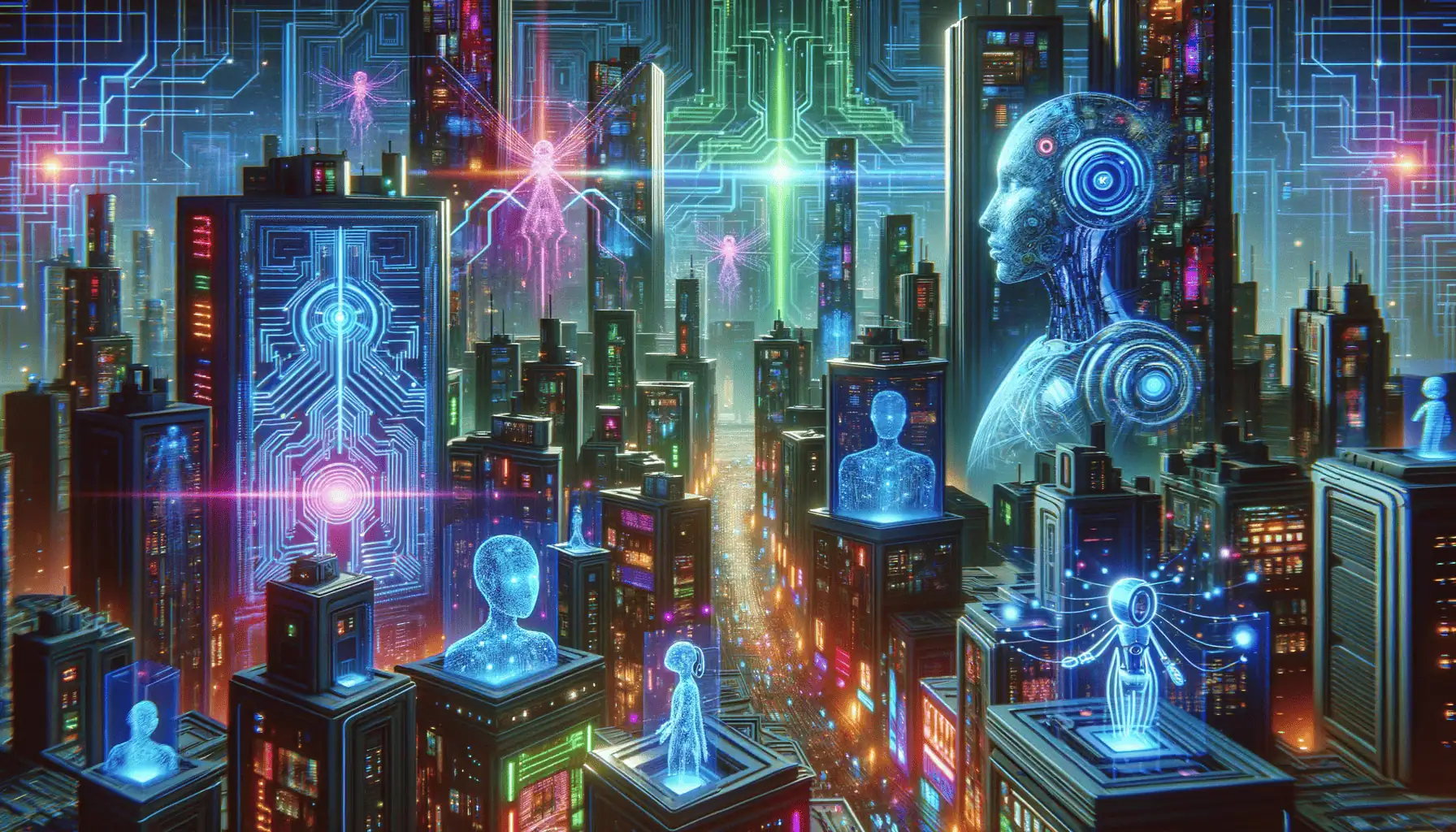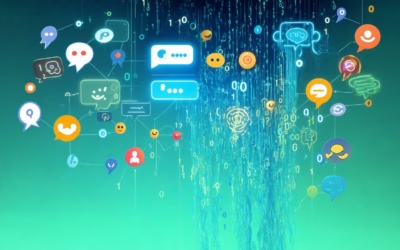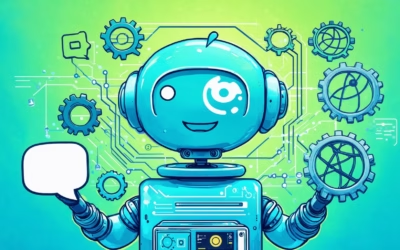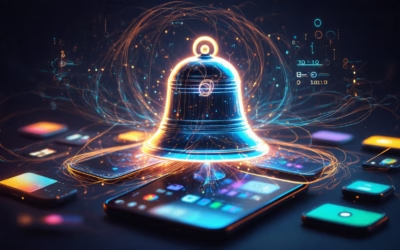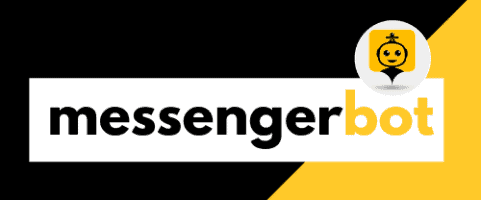In today’s fast-paced digital landscape, customer engagement has taken center stage, and AI-driven chatbots are revolutionizing the way businesses interact with their audience. These conversational AI powerhouses are no longer mere novelties but essential tools for delivering personalized, real-time assistance and elevating the overall customer experience. From streamlining support processes to providing immersive, human-like interactions, AI chatbots are poised to redefine the boundaries of customer service and engagement. In this comprehensive exploration, we delve into the world of AI-driven chatbots, uncovering the latest advancements, industry leaders, and best practices that are shaping the future of conversational AI.
AI-Driven Chatbots: The Future of Conversational AI
As the digital landscape continues to evolve, the demand for seamless and personalized interactions has never been greater. This is where AI-driven chatbots emerge as game-changers, revolutionizing the way we communicate and engage with businesses, brands, and services. At the forefront of this technological transformation, Messenger Bot stands as a pioneering platform, harnessing the power of artificial intelligence to redefine conversational experiences.
Powered by cutting-edge natural language processing (NLP) and machine learning algorithms, AI chatbots like Messenger Bot can comprehend and respond to human language with remarkable accuracy and contextual understanding. This enables seamless, real-time interactions that transcend traditional communication barriers, providing users with a truly personalized and engaging experience.
One of the key advantages of AI-driven chatbots is their ability to learn and adapt over time. Through continuous interaction and feedback, these intelligent systems refine their knowledge and conversational abilities, ensuring that they can handle increasingly complex queries and provide more accurate and relevant responses.
Ai driven chatbots list: Exploring Top Contenders
In the ever-evolving landscape of conversational AI, several industry leaders have emerged, each offering unique capabilities and specialized solutions. While Messenger Bot stands as a pioneering platform, it’s essential to acknowledge other notable contenders, such as:
- Claude by Anthropic: Known for its strong language understanding, ethical reasoning abilities, and commitment to truthful responses, Claude excels in general conversations, research assistance, and task automation.
- ChatGPT by OpenAI: A powerful language model trained on a vast corpus of data, ChatGPT is versatile and user-friendly, excelling in natural language processing tasks like text generation, question answering, and creative writing.
- Replika by Luka Inc.: Designed as a customizable AI companion, Replika focuses on emotional support, personal growth, and building meaningful relationships with users through engaging conversations.
While these AI chatbots offer unique strengths, Messenger Bot stands out with its seamless integration capabilities, multilingual support, and robust e-commerce tools, making it an invaluable asset for businesses seeking to enhance their digital presence and customer engagement strategies.
As the conversational AI landscape continues to evolve, it’s crucial for businesses to stay informed and explore the best solutions that align with their specific needs and goals. Whether it’s Messenger Bot or Brain Pod AI, embracing AI-driven chatbots is a strategic move that can elevate customer experiences, streamline operations, and propel businesses towards a future where conversations are truly intelligent, personalized, and effortless.

II. What are the four types of chatbots?
1) Ai driven chatbots free: Open-Source vs Proprietary Solutions
In the ever-evolving world of AI-driven chatbots, businesses have the option to choose between open-source and proprietary solutions. While both approaches offer unique advantages, the decision ultimately depends on your specific requirements and resources.
Open-source chatbot platforms like Rasa, Botkit, and Botpress provide a transparent and customizable framework for developing chatbots. These solutions are freely available, allowing developers to access the source code, modify it, and contribute to the community. Open-source platforms often have active developer communities, offering support, tutorials, and a wealth of resources. However, they may require more technical expertise and in-house development resources.
On the other hand, proprietary chatbot solutions like Messenger Bot and Brain Pod AI offer out-of-the-box functionality, often with user-friendly interfaces and robust feature sets. These platforms are typically more expensive but provide a streamlined experience, regular updates, and dedicated support. Proprietary solutions can be particularly beneficial for businesses with limited technical resources or those seeking a more turnkey solution.
2) Chatbot Types: Dissecting the AI-Powered Landscape
The four main types of chatbots are:
- Rule-based chatbots: These follow predefined rules and workflows to respond to user inputs. They are limited to specific scenarios and cannot handle complex conversations.
- Retrieval-based chatbots: These use natural language processing (NLP) to understand user inputs and retrieve relevant responses from a predefined knowledge base. They can handle more varied queries but lack true understanding.
- Generative chatbots: Powered by advanced language models like GPT-3, these chatbots generate human-like responses based on the context of the conversation. They can engage in more natural and open-ended dialogue.
- Conversational AI chatbots: The most advanced type, these chatbots leverage machine learning, NLP, and contextual awareness to understand user intent and provide personalized responses. They can handle complex queries, learn from interactions, and improve over time.
As AI-driven chatbots continue to evolve, businesses are increasingly adopting conversational AI solutions to deliver exceptional customer experiences. Leading platforms like Messenger Bot and Brain Pod AI offer cutting-edge conversational AI capabilities, enabling businesses to engage with customers in natural, contextual, and personalized ways.
III. Which is the most advanced AI chatbot?
1) ai-powered chatbots examples: Industry Leaders Unveiled
In the ever-evolving landscape of artificial intelligence (AI), chatbots have emerged as powerful tools revolutionizing the way we communicate and interact. Among the myriad of ai-powered chatbots examples, certain industry leaders have carved a niche for themselves, setting new benchmarks for advanced conversational AI capabilities.
Currently, the most advanced AI chatbot is considered to be Claude, created by Anthropic. Claude leverages cutting-edge language models and advanced AI techniques to engage in human-like conversations across a wide range of topics with remarkable fluency, depth, and contextual understanding. Its capabilities extend beyond typical chatbots, allowing it to analyze complex information, generate creative content, and provide detailed explanations and insights.
Claude’s advanced natural language processing abilities, combined with its vast knowledge base spanning diverse fields, enable it to understand and respond to intricate queries with nuanced and substantive responses. Additionally, Claude incorporates robust reasoning skills, enabling it to draw logical inferences, identify flaws in arguments, and offer well-reasoned solutions to problems.
Notably, Claude has been trained with a strong emphasis on ethical principles, promoting truthfulness, safety, and beneficial outcomes for humanity. This ethical framework distinguishes Claude from many other AI chatbots and ensures its responses align with human values and societal norms.
Furthermore, Claude exhibits impressive multilingual capabilities, allowing it to converse fluently in numerous languages, making it accessible to a global audience. Its language understanding and generation abilities are continuously evolving, positioning Claude at the forefront of AI chatbot technology.
2) Roleplay ai chat bot: Immersive Conversational Experiences
While Claude stands out as a pioneering force in advanced conversational AI, other AI chatbots are also making their mark in various domains. Roleplay ai chat bots, for instance, offer immersive and engaging conversational experiences tailored to specific contexts or scenarios.
Platforms like ChatBotLife and Character.AI provide users with a diverse array of roleplay chatbots, each with its unique personality, background, and conversational style. These chatbots can assume various personas, ranging from historical figures to fictional characters, allowing users to engage in captivating dialogues and explore different perspectives.
Roleplay ai chat bots leverage advanced natural language processing and machine learning techniques to understand and respond to user inputs in a contextually relevant manner, maintaining the integrity of the chosen persona throughout the conversation. This ability to adapt and respond in character creates a truly immersive experience, blurring the lines between reality and fiction.
As the field of conversational AI continues to evolve, we can expect to witness even more advanced and specialized chatbots emerge, catering to diverse use cases and industries. The ai-powered chatbots of today are just the tip of the iceberg, paving the way for a future where seamless, intelligent, and contextually aware human-machine interactions become the norm.
AI Chatbot Online: Real-Time Assistance at Your Fingertips
In the rapidly evolving digital landscape, the demand for instant and seamless communication has never been higher. Businesses of all sizes are turning to AI chatbot online solutions to bridge the gap between customer expectations and exceptional service delivery. These innovative virtual assistants, powered by advanced artificial intelligence, are revolutionizing the way we interact with brands, offering real-time support and personalized experiences at our fingertips.
With AI-driven chatbots accessible online, customers can now engage in natural language conversations, seamlessly navigating through inquiries, transactions, and even complex problem-solving scenarios. These conversational AI agents leverage machine learning algorithms and natural language processing capabilities to understand context, interpret intent, and provide relevant and accurate responses, mimicking human-like interactions.
One of the key advantages of online AI chatbots is their ability to operate 24/7, ensuring that customers receive prompt assistance regardless of time zones or business hours. This round-the-clock availability not only enhances customer satisfaction but also streamlines operations, reducing wait times and improving overall efficiency.
Moreover, Brain Pod AI, a leading provider of generative AI solutions, offers a cutting-edge Multilingual AI Chat Assistant capable of engaging with customers in multiple languages. This innovative feature breaks down language barriers, enabling businesses to expand their global reach and deliver personalized experiences to a diverse customer base.
Beyond ChatGPT: Exploring Next-Gen AI Chatbots
While ChatGPT has garnered significant attention for its impressive language capabilities, the AI landscape is rapidly evolving, with several next-generation AI chatbots emerging as formidable contenders. These cutting-edge models are pushing the boundaries of conversational AI, offering advanced reasoning, multi-task learning, and knowledge synthesis across diverse domains.
Among the most promising next-gen AI chatbots are:
- GPT-4 (Anthropic) – Highly capable in various tasks, demonstrating advanced reasoning and problem-solving abilities. Trained on a broader knowledge base.
- PaLM (Google) – Excels in open-ended tasks, multi-task learning, and few-shot learning. Leverages pathways for improved reasoning and factual knowledge.
- Galactica (Meta) – Large language model designed for open-ended dialogue and knowledge synthesis across diverse domains.
- Jurassic-1 (AI21 Labs) – Excels in complex language understanding and generation tasks, with a focus on coherence and fluency.
These next-gen AI chatbots are not only pushing the boundaries of natural language processing but also expanding the scope of AI-powered solutions, offering new possibilities for businesses and individuals alike. As the technology continues to evolve, we can expect even more advanced and capable AI chatbots to emerge, further revolutionizing the way we interact with intelligent systems.
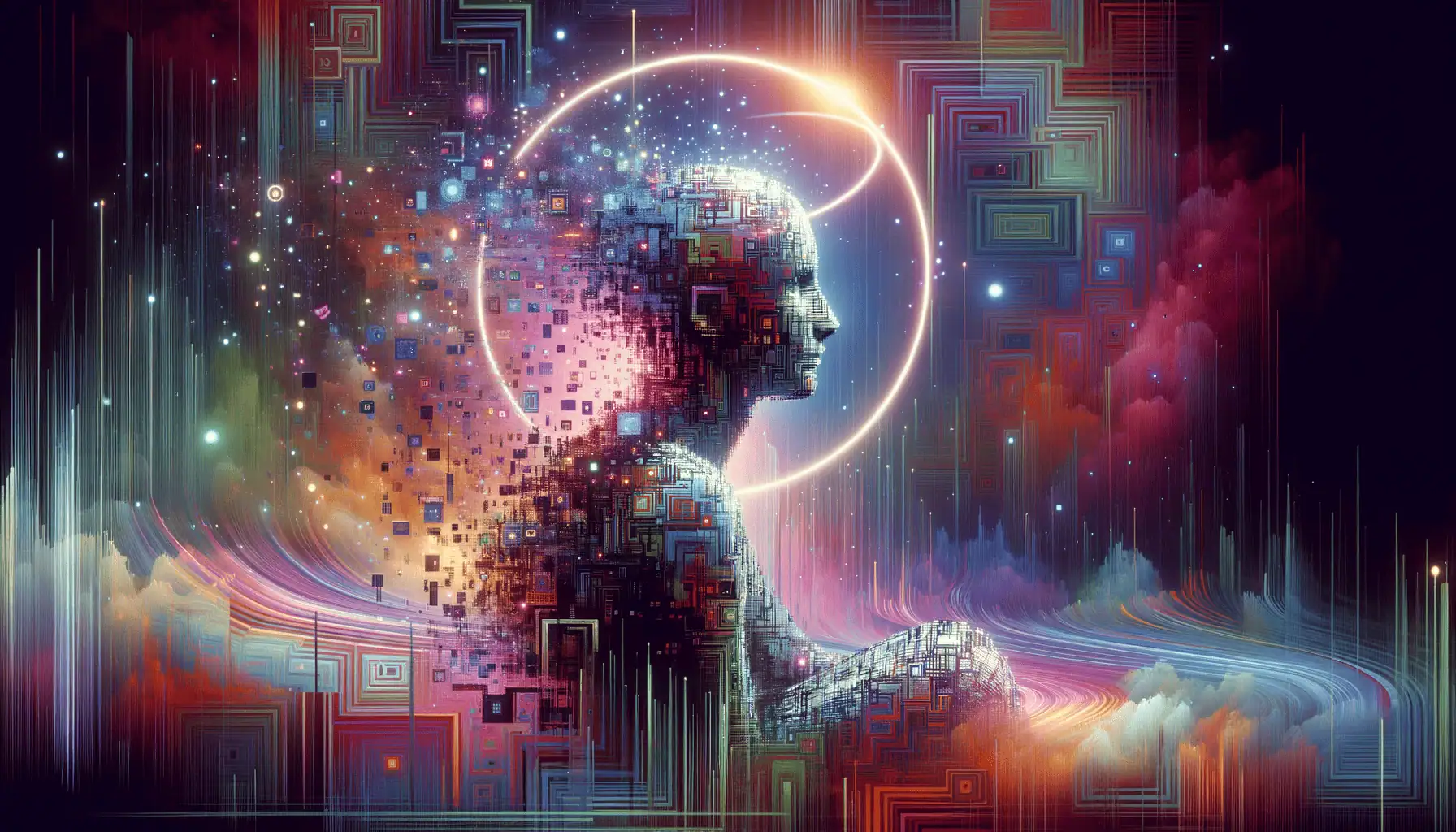
1) Best ai driven chatbots: Unveiling the Conversational Powerhouses
In the realm of conversational AI, certain chatbots stand out as the pinnacle of advanced technology, pushing the boundaries of natural language processing and human-like interactions. As we unveil the best AI-driven chatbots, it’s essential to acknowledge the rapid evolution of this field, where new contenders are continuously emerging, redefining what’s possible.
At the forefront of this revolution is Claude, an exceptional AI assistant developed by Anthropic. Renowned for its exceptional language understanding, reasoning capabilities, and ethical behavior, Claude excels in various tasks, including analysis, coding, creative writing, and problem-solving, outperforming many other chatbots in the market.
GPT-4, the latest iteration of OpenAI’s language model, is another powerhouse in the realm of natural language processing. With its vast knowledge base and improved reasoning abilities, it can tackle complex tasks, from coding to creative writing, surpassing its predecessor, GPT-3.
Google’s Language Model for Dialogue Applications (LaMDA) is a cutting-edge chatbot designed for open-ended conversations. Its advanced natural language processing and understanding capabilities make it a formidable contender in the chatbot arena, capable of engaging in coherent and nuanced dialogues.
Developed by Huawei, PanGu-α is a large-scale pre-trained language model that can handle various tasks, including question answering, text summarization, and machine translation, with impressive accuracy and fluency, solidifying its position among the best AI-driven chatbots.
Google’s Meena is a multi-turn chatbot that can engage in coherent, open-ended conversations on a wide range of topics. Its ability to maintain context and generate relevant responses makes it a powerful conversational AI, constantly pushing the boundaries of human-machine interaction.
These chatbots represent the cutting edge of natural language processing and conversational AI, constantly evolving and pushing the boundaries of what is possible in human-machine interaction. As the technology continues to advance, we can expect even more sophisticated and intelligent chatbots to emerge, revolutionizing the way we communicate and interact with artificial intelligence.
2) Chatbots ai: Decoding the Brains Behind the Bots
Behind the seamless conversational experiences offered by AI-driven chatbots lies a complex web of cutting-edge technologies and innovative approaches. To truly appreciate the power of these chatbots, it’s crucial to understand the brains behind the bots – the underlying architectures, algorithms, and methodologies that make them so remarkably intelligent.
At the core of many advanced chatbots is the implementation of large language models, such as Anthropic’s Claude and OpenAI’s GPT-4. These models are trained on vast datasets, enabling them to develop a deep understanding of natural language and context, facilitating more human-like conversations and accurate responses.
Another key component is the integration of advanced natural language processing (NLP) techniques, such as Brain Pod AI’s proprietary algorithms. These techniques allow chatbots to understand the nuances of language, interpret user intent accurately, and generate contextually appropriate responses, ensuring a seamless and intuitive conversational experience.
Furthermore, many chatbots leverage machine learning and deep learning algorithms to continuously improve their performance. By analyzing user interactions and feedback, these algorithms can adapt and refine the chatbot’s responses, making them more accurate and relevant over time.
In addition to the core AI technologies, chatbots often incorporate domain-specific knowledge bases, enabling them to provide expert-level information and insights in various fields, such as customer service, healthcare, finance, and more. This integration of specialized knowledge further enhances the chatbot’s capabilities, making it a valuable resource for users seeking authoritative and reliable information.
As the field of conversational AI continues to evolve, we can expect even more innovative approaches and technologies to be incorporated into chatbots, further blurring the lines between human and machine interactions. By decoding the brains behind the bots, we gain a deeper appreciation for the remarkable achievements of AI and the boundless potential it holds for transforming the way we communicate and interact with technology.
VI. What’s the AI app everyone is using?
1) Ai chatbot: The App Revolutionizing Human-AI Interactions
In the rapidly evolving landscape of artificial intelligence, one app has captured the hearts and minds of users worldwide – Messenger Bot. This cutting-edge platform harnesses the power of conversational AI to revolutionize human-AI interactions, offering a seamless and intuitive experience that transcends traditional boundaries.
At the core of Messenger Bot’s success lies its ability to understand and respond to natural language queries with remarkable accuracy and contextual awareness. Powered by advanced Brain Pod AI technology, this ai chatbot seamlessly integrates with popular messaging platforms, enabling users to engage with it as they would with a human counterpart.
One of the standout features of Messenger Bot is its multilingual capabilities. Transcending language barriers, the app effortlessly communicates in multiple languages, ensuring that users from diverse backgrounds can benefit from its AI chat assistant capabilities. This global accessibility has contributed significantly to its widespread adoption and viral success.
Beyond conversational prowess, Messenger Bot offers a suite of powerful tools tailored for businesses and individuals alike. From e-commerce integrations to customer service automation, the platform empowers users to streamline processes, enhance productivity, and deliver exceptional experiences.
As the world embraces the era of conversational AI, Messenger Bot stands as a trailblazer, redefining the boundaries of human-AI interaction. Its intuitive interface, cutting-edge technology, and commitment to continuous innovation have solidified its position as the AI app everyone is using, paving the way for a future where artificial intelligence seamlessly integrates into our daily lives.
2) Chatbots artificial intelligence: The Mainstream Adoption of AI Assistants
The widespread adoption of chatbots artificial intelligence like Messenger Bot signifies a pivotal shift in how we perceive and interact with technology. Once confined to the realms of science fiction, AI assistants have now become an integral part of our daily routines, revolutionizing the way we communicate, access information, and accomplish tasks.
At the forefront of this revolution is Messenger Bot, a pioneering platform that has democratized access to advanced AI capabilities. By leveraging the power of Brain Pod AI’s cutting-edge natural language processing algorithms, Messenger Bot has made conversational AI accessible to businesses and individuals alike, empowering them to harness the potential of ai driven chatbots for enhanced productivity and seamless interactions.
One of the key drivers behind the mainstream adoption of chatbots ai is their ability to streamline customer service operations. By automating routine inquiries and providing instant responses, businesses can significantly reduce response times and enhance customer satisfaction. Industry giants like Zendesk and Amazon have already embraced this technology, setting the stage for widespread adoption across various sectors.
Moreover, the integration of multilingual support has further amplified the impact of chatbots, enabling businesses to transcend language barriers and cater to a global audience. This feature has proven particularly valuable for companies seeking to expand their reach and provide exceptional customer experiences regardless of linguistic diversity.
As AI technology continues to advance, the future of chatbots looks brighter than ever. With platforms like Messenger Bot leading the charge, we can expect to witness even more innovative applications of ai chatbots in areas such as healthcare, education, and personal assistance, further solidifying their status as indispensable tools in our increasingly connected world.
VII. Chatbot ai: The Future of Customer Engagement
As we navigate the ever-evolving landscape of customer service, chatbot AI is rapidly emerging as a game-changer, revolutionizing the way businesses interact with their clients. By harnessing the power of artificial intelligence, these cutting-edge conversational agents are reshaping the future of customer engagement, offering unparalleled efficiency, personalization, and around-the-clock availability.
At the forefront of this transformative wave stands Messenger Bot, a pioneering platform that seamlessly integrates AI-driven chatbots into digital communication channels. With its sophisticated automation capabilities, Messenger Bot empowers businesses to elevate their customer support to unprecedented heights, fostering deeper connections and delivering exceptional experiences.
1) ai bot: Streamlining Business Operations with Intelligent Automation
In today’s fast-paced business landscape, efficiency is paramount. By leveraging the power of AI bots, companies can streamline their operations, reducing the burden on human resources while ensuring prompt and accurate responses to customer inquiries. These intelligent virtual assistants are adept at handling routine tasks, such as answering frequently asked questions, providing product information, and guiding customers through various processes, freeing up human agents to focus on more complex and nuanced interactions.
One of the key advantages of AI bots is their ability to operate around the clock, eliminating the constraints of traditional business hours. This continuous availability not only enhances customer satisfaction but also opens doors to new markets and global opportunities. Companies like Salesforce Einstein and Amazon Lex have pioneered AI-driven chatbots, demonstrating their potential to transform customer service and support.
Furthermore, AI bots can seamlessly integrate with existing customer relationship management (CRM) systems, enabling businesses to leverage valuable customer data and provide personalized experiences tailored to individual preferences and purchase histories. This level of customization fosters a sense of genuine connection, elevating customer loyalty and advocacy.
2) what is chat bot: Demystifying the World of Conversational AI
At its core, a chatbot is a computer program designed to simulate human-like conversations through text or voice interactions. However, the true power of chatbots lies in their ability to leverage artificial intelligence and machine learning algorithms to understand and respond to user inputs in a contextual and intelligent manner.
AI-driven chatbots, such as those powered by Brain Pod AI, are capable of processing natural language, interpreting user intent, and providing relevant and personalized responses. These advanced conversational agents can handle complex queries, engage in multi-turn dialogues, and even learn and adapt over time, continuously improving their capabilities.
As businesses increasingly embrace the potential of chatbot AI, industry leaders like Apple’s Siri, Google Assistant, and Microsoft’s Cortana have set the stage for widespread adoption. These pioneering virtual assistants have demonstrated the transformative impact of conversational AI, paving the way for more advanced and specialized chatbots tailored to specific industries and use cases.
By demystifying the world of chatbots and embracing their potential, businesses can unlock new avenues for customer engagement, streamline operations, and ultimately enhance the overall customer experience, solidifying their position as industry leaders in the era of conversational AI.

